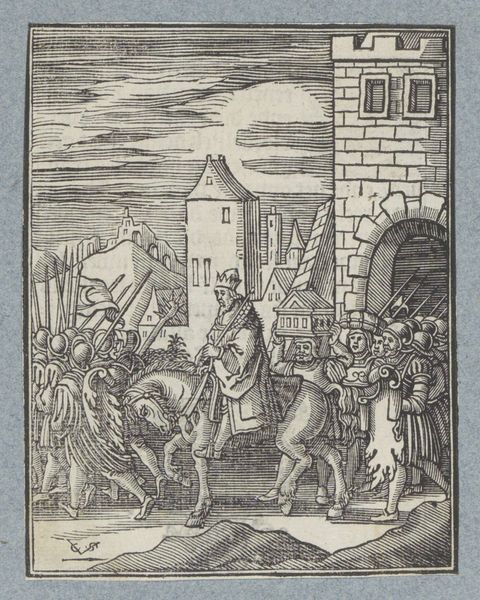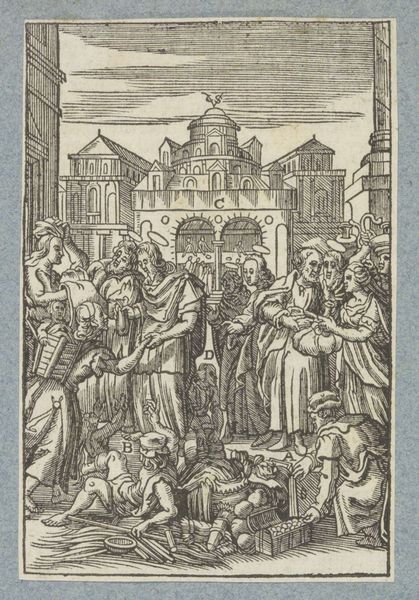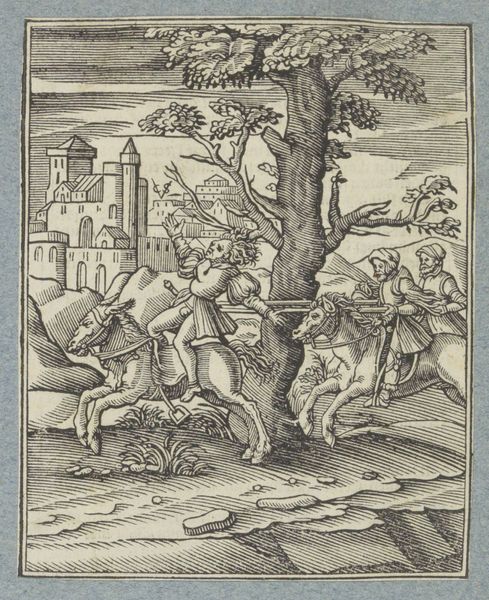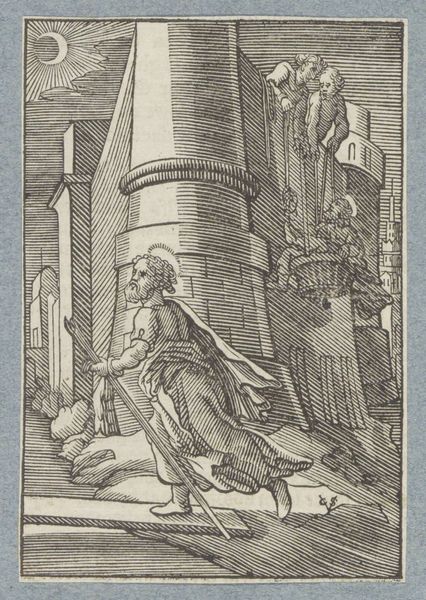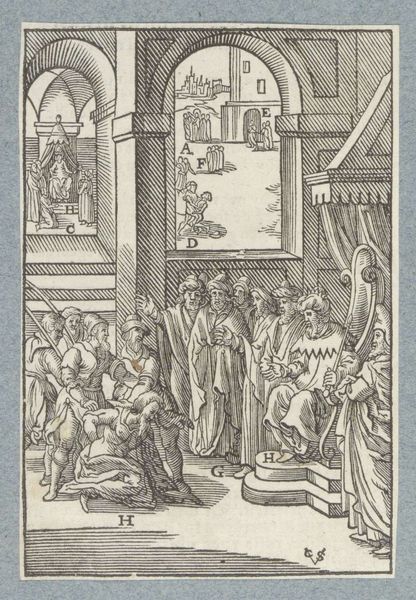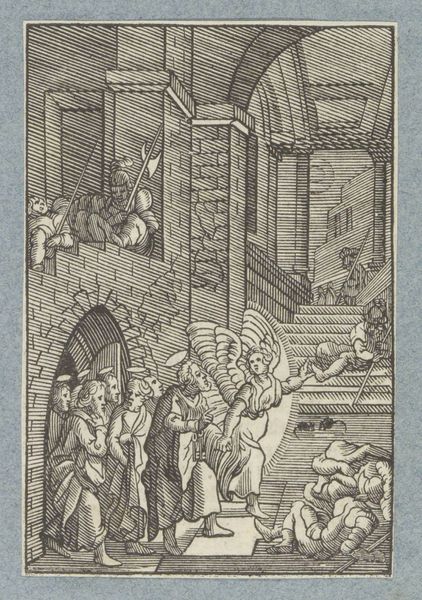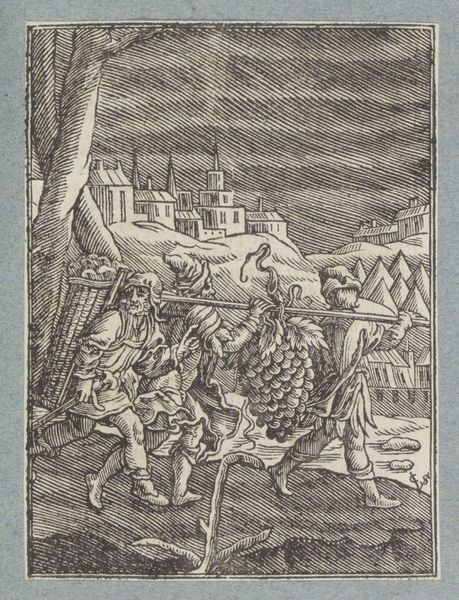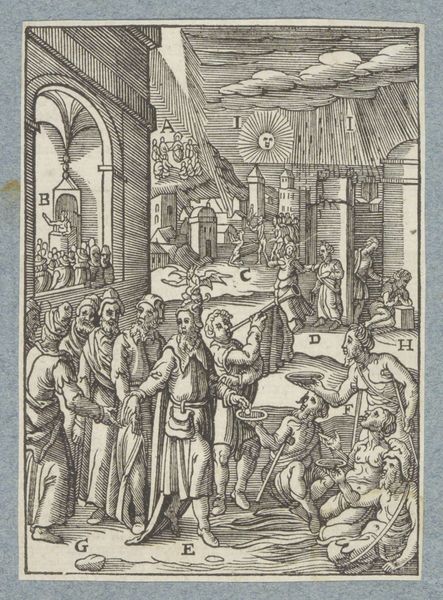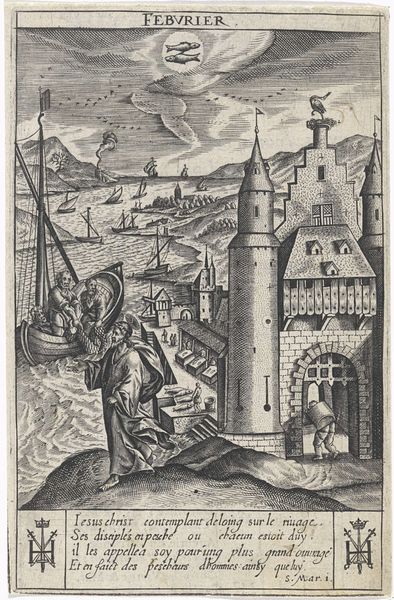
Haman leidt Mordekai in koningsgewaad en op het paard van de koning over de marktplaats 1645 - 1646
0:00
0:00
christoffelvaniisichem
Rijksmuseum
print, engraving
#
comic strip sketch
#
medieval
#
narrative-art
# print
#
pen sketch
#
sketch book
#
personal sketchbook
#
sketchwork
#
pen-ink sketch
#
pen work
#
sketchbook drawing
#
cityscape
#
genre-painting
#
history-painting
#
storyboard and sketchbook work
#
sketchbook art
#
engraving
Dimensions: height 109 mm, width 82 mm
Copyright: Rijks Museum: Open Domain
Curator: Here we have Christoffel van Sichem the Younger's print from around 1645-1646, entitled "Haman leads Mordecai in royal attire on the king's horse through the marketplace". It's currently housed here at the Rijksmuseum. Editor: My first impression is one of ironic humiliation. The rigid lines of the engraving, while detailed, somehow amplify the discomfort radiating from Haman's forced obedience. There's a real power dynamic at play, isn't there? Curator: Absolutely. This image depicts a scene from the Book of Esther, where Haman, who plotted to exterminate the Jews, is compelled by King Ahasuerus to parade his enemy, Mordecai, through the city in royal garments. The marketplace, meticulously rendered here, would have amplified that performative reversal. Editor: I'm immediately struck by how the artist uses line to define social strata. Look at the ostentatious buildings against the modest marketplace activity; we feel the tension of this forced spectacle destabilizing hierarchies. The perspective creates an almost stage-like setting. What was Van Sichem's aim with such rigid formal choices? Curator: His formal choices would place the viewer as witness to the theatrical unraveling of Haman’s authority. Sichem would have been aware of using prints for their power as dissemination tools – to showcase moral lessons and narratives to a wider public who likely would be actively following these visual retellings of familiar bible narratives. Consider the Reformation and how Protestant visual strategies utilized print to actively make the Bible stories visible and accessible in public life. Editor: Yes! So it’s beyond merely illustrative. The choice of a marketplace transforms it into a charged arena. The active presence of the citizens becomes integral in that message of publicly visible injustice that now shifts away from Haman. In what ways can we also examine the figure of Mordecai? Curator: It’s worth remembering he maintains the image of composed and righteous as it showcases how perceived enemies were turned into heroes in such a moment as the reformation which in return served to inspire a public to actively find themselves mirrored within such historical religious narratives. We might examine the complexities of representation, and if or not such depictions served as tools for manipulation or sites for communal identity formation? Editor: This work, therefore, serves not only as a window into a specific historical moment but also compels us to question how similar performances of power and resistance manifest even today. Thanks to this analysis, I now experience a greater connection to the themes this work conveys across centuries! Curator: And by considering those relationships that transcend the art historical moment to comment on more profound intersectional analyses of race and gender, our reading can become more richly aligned to art and life!
Comments
No comments
Be the first to comment and join the conversation on the ultimate creative platform.
